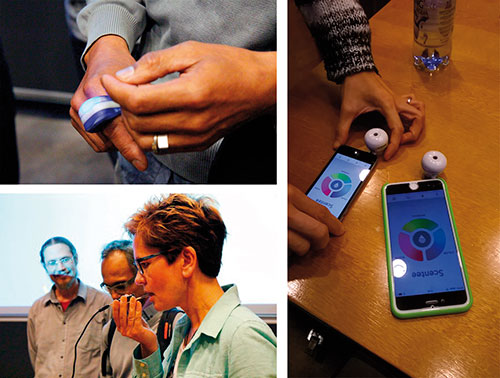Perceivability

The principle of perceivability acknowledges that our experience of any interactive product passes through our senses first. The more prominently an element of an interface engages the user’s senses, the easier it is for the user to perceive that element, which is a prerequisite to understanding what that element does and how to interact with it. For example, the louder the voice of a satnav, the stronger the vibration of a mobile phone or the bigger an icon on a screen, the easier it is for the user to perceive those stimuli.
The extent to which the elements of an interface are perceivable depends on the characteristics of a product’s interface, the characteristics of the user and those of the environment in which the interaction takes place.
